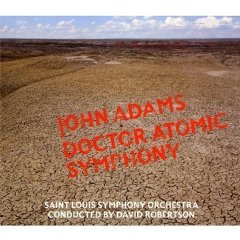Each generation of composers coming up through college is always a little dismayed to find their music history survey books fizzling out in their descriptions current composers. Maybe one compressed chapter at the end, with a jumble of names or the barest of thumbnail sketches. Half are already only half-remembered, and the other half are musicians you desperately want something, anything more from or about! Yet often somewhere out there beyond the curriculum, there’s another kind of book; one some dedicated fan, critic or participant created, providing fuller sketches and often interviews with the people that matter most to them in the here and now (one such that mattered greatly for me in the 1980s was John Rockwell’s All American Music).
Another of my little quirks is a strong liking for a number of recent and contemporary Canadian composers. I have no idea how it happened — other than perhaps years of government funding and a certain image of some “outsider” isolation and independence — but to my ears Canada has produced a remarkably large group of surprising and creative musicians.
So I was very happy to see that one of the latest “catch-up” books on composers comes from a Canadian perspective. Paul Steenhuisen, a fine Canadian musician in his own right, has recently published Sonic Mosaics: Conversations with Composers (University of Alberta Press, 2009), a collection of interviews with (mostly) living composers from America, Europe and Canada.
We asked another Canadian musician and journalist, John Oliver, to review the book:
……………………………………………….
Sonic Mosaics is a book of interviews conducted by composer Paul Steenhuisen over a three-year period from 2001-2004. Over half of the interviews were commissioned by Toronto’s monthly, short-run music publication WholeNote on the occasion of a composer’s presence in the city for a premiere performance or CD release. Two were originally published in Musicworks magazine and the rest were conducted by Steenhuisen afterward to complete the book and attempt to represent more Canadian composers.
Steenhuisen gets full marks for disclosure: he reveals the shortcomings and strengths of the book in the introduction. Although the book contains a large number of interviews with Canadian composers, the author admits that it is by no means representative of the entire country. The reader is treated to six interviews with non-Canadian composers, three of which occur as a result of a composer’s appearance as a guest of New Music Concerts. Five are with the most senior generation of international contemporary music “stars”: Pierre Boulez, George Crumb, Mauricio Kagel, Christian Wolff and Helmut Lachenmann; the sixth is UK composer Michael Finnissy.
Equivalent Canadian senior composers include R. Murray Schafer, John Weinzweig, Udo Kasemets, John Beckwith, and Francis Dhomont. Yet equivalent senior composers of Quebec and the rest of Canada are not represented. The rest of the interviews give a glimpse into the creative minds of primarily composers who reside in the province of Ontario. Place-of-residence analysis reveals that, of the 26 Canadian interviewees, 16 reside in Ontario, 6 in Quebec, 3 in British Columbia, and one in Alberta: not an accurate proportional representation. The reader may also note that over half of composers represented here teach at universities, an understandable bias given the author’s background and the general tendency in Canada for composers to gain a livelihood from teaching. If this represents only a subset of important Canadian composers, the reader’s curiosity will be aroused to seek out information about more as a result of reading this book. A second volume is in order.

 We heard from Christian Carey last week that the American Composers Orchestra has brought on
We heard from Christian Carey last week that the American Composers Orchestra has brought on  WPRB’s Marvin Rosen is doing a special edition of his Classical Discoveries radio show this Wednesday, Jan. 27th. From 5:30 until 11:00 AM EST. Titled “East Meets West“, the entire five-and-a-half hours will be devoted to works by Middle and Far Eastern Composers, as well as to works by Western composers inspired by these regions. A special treat in the 10-o’clock hour will be the world premiere broadcast of the Sonata for solo viola Op. 423 (1992) by Alan Hovhaness (1911-2000), performed by Christina Fong (from a
WPRB’s Marvin Rosen is doing a special edition of his Classical Discoveries radio show this Wednesday, Jan. 27th. From 5:30 until 11:00 AM EST. Titled “East Meets West“, the entire five-and-a-half hours will be devoted to works by Middle and Far Eastern Composers, as well as to works by Western composers inspired by these regions. A special treat in the 10-o’clock hour will be the world premiere broadcast of the Sonata for solo viola Op. 423 (1992) by Alan Hovhaness (1911-2000), performed by Christina Fong (from a  If you happen to be on the other coast that same day (Jan. 27th), you’re in for a treat if you head to the Pasadena Central Library (Donald R. Wright Auditorium, 285 E. Walnut St.) at 6PM PST, for a concert presented by Cellogrill (über-cellist
If you happen to be on the other coast that same day (Jan. 27th), you’re in for a treat if you head to the Pasadena Central Library (Donald R. Wright Auditorium, 285 E. Walnut St.) at 6PM PST, for a concert presented by Cellogrill (über-cellist 

 The tremendously devastating earthquake in Haiti has brought forth a wonderful outpouring of donations from all corners, to a lot of fine organizations dedicated to helping these folk through the weeks and months ahead. Sometimes though, it takes a little extra prod to dislodge those few more dollars that, while so small here, can make an enormous difference in the survivor’s well-being.
The tremendously devastating earthquake in Haiti has brought forth a wonderful outpouring of donations from all corners, to a lot of fine organizations dedicated to helping these folk through the weeks and months ahead. Sometimes though, it takes a little extra prod to dislodge those few more dollars that, while so small here, can make an enormous difference in the survivor’s well-being.
